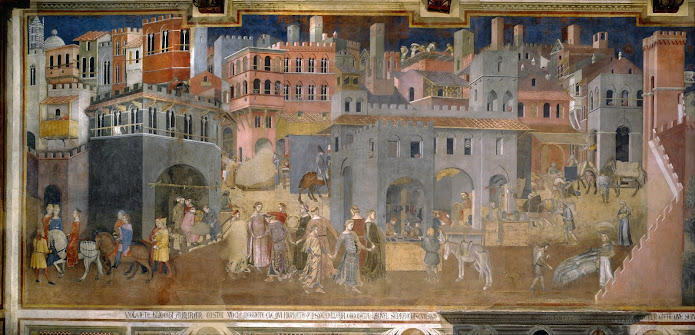Baroque
Judith Slaying Holofernes | Artemisia Gentileschi
Artemisia Gentileschi
Gentileschi was a talented Baroque painter who began putting out amazing artwork at a young age. She had a focus on realism and painted a lot of women from stories, folklore, and notable allegories; while highlighting their naturalism. Sadly, a lot of her story and career were not as talked about as how she was raped and the story of that covered up many of her achievements. Now, she is talked about and appreciated by people all over the world and has many paintings in prestigious art museums.
Judith Slaying Holofernes
This painting is something of a self portrait, where Gentileschi is getting revenge for when a man named Agostino Tassi raped her. She wanted to kill him and get revenge and when there was no way of getting justices, the closest thing was to paint it. In this, Judith, the woman with the sword is Gentileschi, and the man, Holofernes, is Agostino. This is a disturbing piece and is a bit shocking when first looked at due to the realism of it. This is, like most of Artemisia's work, and oil painting and is currently on display at the Uffizi Gallery in Florence.
Something to not about this paining is how there are a few versions and interpretations, some claiming how there is no deeper meaning and that the man being beheaded (Holofernes) is a political enemy and the woman (Judith) is a divine assassin. In this specific version, one of the unique details is the bracelet on Judith's wrist. This bracelet symobloises the Goddess Artemis, who's is seen as a guardian of virginity who brings a violent end to people who threaten that
Baroque Dramatism
As we learned in this weeks studying of baroque art, we saw a reoccurring characteristic was making the subjects appear more theatrical. This example was already a dramatic idea, but you can see how much of a production being made of the actions in this work. The story it tells is dramatic, and looking at the piece, a death scene like this can't look anything but theatrical, from facial expressions to how the bodies are contorted and positioned in the struggle make it a fascinating work of art.
 |
| The Calling of St.Matthew - Caravaggio |
Tenebrism
We all know what tenebrism is from the readings this week and I wanted to point out how this piece here, The Calling of St.Matthew, uses tenebrism to add the depth to the room and to aid with the lighting. This technique, while not as direct is also an important part of Gentileschi's painting above, as it gives everything a more dramatic look and doesn't allow for things in the background to pull your focus away.References
“Agostino Tassi.” Wikipedia, Wikimedia Foundation, 20 Feb. 2021, en.wikipedia.org/wiki/Agostino_Tassi#Rape_conviction.
“Artemisia Gentileschi.” Wikipedia, Wikimedia Foundation, 22 Feb. 2021, en.wikipedia.org/wiki/Artemisia_Gentileschi.
“Judith Slaying Holofernes (Artemisia Gentileschi, Florence).” Wikipedia, Wikimedia Foundation, 30 Nov. 2020, en.wikipedia.org/wiki/Judith_Slaying_Holofernes_(Artemisia_Gentileschi,_Florence).
“More Savage than Caravaggio: the Woman Who Took Revenge in Oil.” The Guardian, Guardian News and Media, 5 Oct. 2016, www.theguardian.com/artanddesign/2016/oct/05/artemisia-gentileshi-painter-beyond-caravaggio.





Wow, what an interesting painting! Something I really appreciate about it is the way that the intense shadows heighten the emotions of the painting. The lighting highlights the figures' faces, really letting their emotions stand out. The shadowed background also enhances the drama and the violence of the scene. Like you mentioned, the realism really does stand out. The textures of the fabrics in particular is very beautiful. I particularly enjoy the velvet blanket/cloth that is covering Agostino - it looks just like real velvet. The drama and theatrics of baroque painting has always been fascinating to me. Thank you for sharing this piece!
ReplyDeleteKazden,
ReplyDeleteThis piece by Gentileschi is the definition of dramatic tenebrism. What a scene! I can definitely get the sense of anger and revenge in this painting. The use of this vibrant red pops out most and suggests the emotion of anger. We often associate the color red with anger, at least in my opinion. You can also sense anger captured by her facial expression. I would like to add that I too researched this painting and found that Judith describes this act as heroic to free "thepeople of Isreal from the seige by Neebuchadnezzar's army" (unknown). Holofernes was the enemy army general and Judith was dressed to impress hoping to catch the general off guard. He invited her back and she waited for the right moment to strike. I feel Gentileschi captured that moment beautifully. I also learned that because of the strong reactions this painting created it was with great "difficulty and the help of her friend Galileo Galilei that the painter managed to extract the payment, with a significant delay, that had been agreed with Grand Duke Cosimo II de’ Medici" (Unknown). In today's era, this painting is said to represent "the human and professional tale of a woman who chose to be an artist in an era dominated by men" (Unknown). Truly a remarkable piece.
reference: https://www.uffizi.it/en/artworks/judith-beheading-holofernes
This comment has been removed by the author.
ReplyDeleteWhat an intense piece of work Judith Slaying Holofenes is. I love that she painted this with a thought of justice for herself in the horrible experience that was put on her. The lightness in the subjects and the shadows around them really draw you into what is being displayed. Great Job!
ReplyDelete